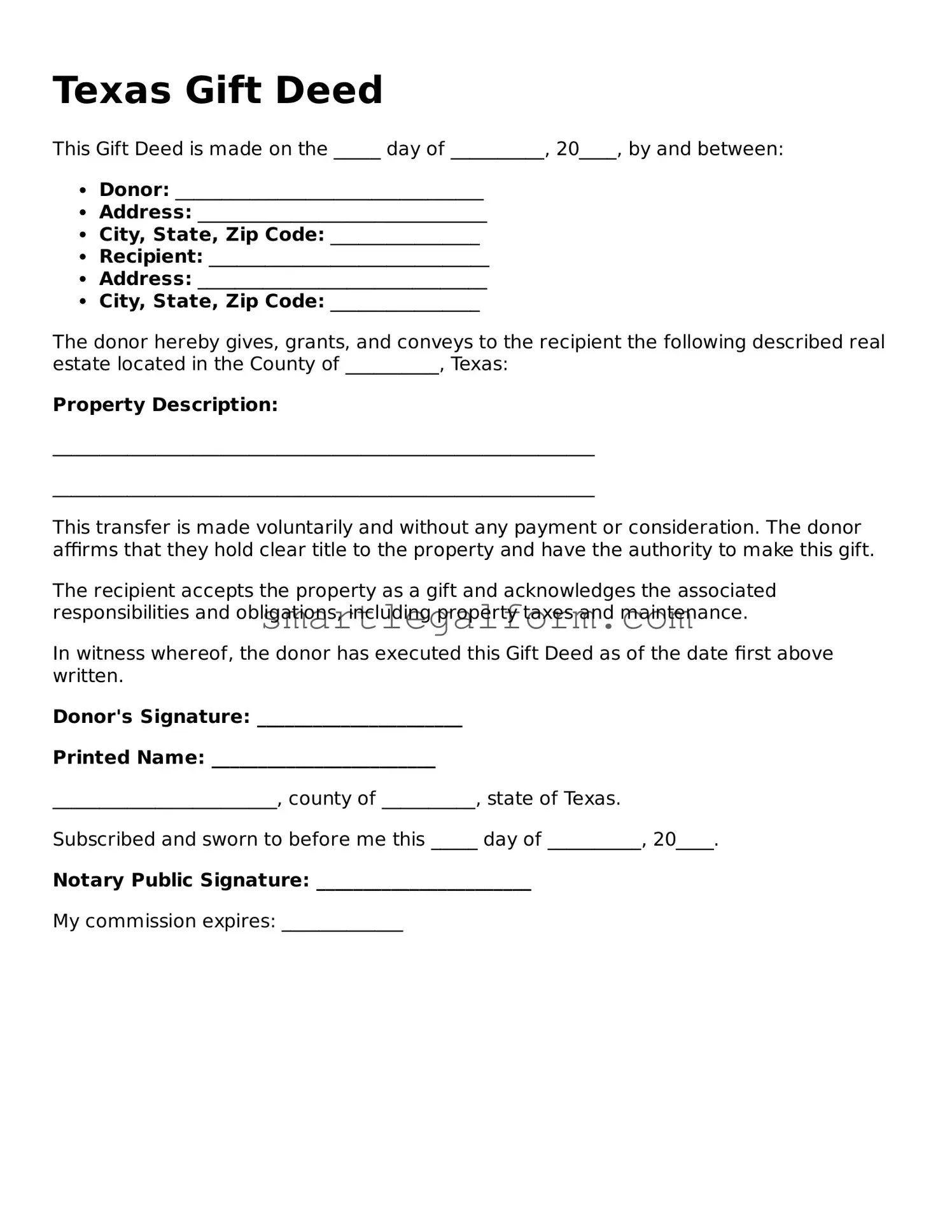Texas Gift Deed
This Gift Deed is made on the _____ day of __________, 20____, by and between:
- Donor: _________________________________
- Address: _______________________________
- City, State, Zip Code: ________________
- Recipient: ______________________________
- Address: _______________________________
- City, State, Zip Code: ________________
The donor hereby gives, grants, and conveys to the recipient the following described real estate located in the County of __________, Texas:
Property Description:
__________________________________________________________
__________________________________________________________
This transfer is made voluntarily and without any payment or consideration. The donor affirms that they hold clear title to the property and have the authority to make this gift.
The recipient accepts the property as a gift and acknowledges the associated responsibilities and obligations, including property taxes and maintenance.
In witness whereof, the donor has executed this Gift Deed as of the date first above written.
Donor's Signature: ______________________
Printed Name: ________________________
________________________, county of __________, state of Texas.
Subscribed and sworn to before me this _____ day of __________, 20____.
Notary Public Signature: _______________________
My commission expires: _____________
